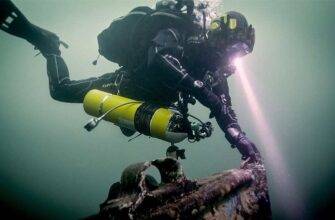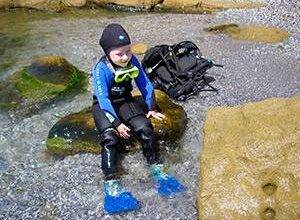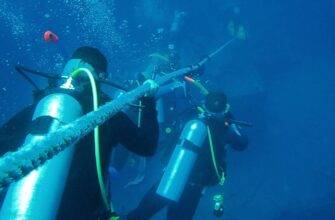A scuba cylinder is a cylindrical metal vessel designed to safely store compressed air for breathing.
Types and features
Cylinders come in a variety of air capacity, depending on the pressure rating and size. Cylinder volume is expressed in kilograms or liters of water capacity. Because the air in the cylinder is in a compressed state, a small cylinder can hold a significant amount of air.
The three most common cylinder sizes are 8,10,11.5L (kg), although other sizes are also used.
Sometimes a combination of two cylinders is used to provide additional air supply.
The standard 11.5 liter cylinder contains approximately the same amount of air as a small room, compressed to a size of 600 mm in length and 150 mm in diameter. As the air in the cylinder is compressed, its pressure increases. The pressure in cylinders can exceed 32 MPa (320atm), but the usual pressure rating is 20.7-27.6MPa (207-276atm).
Materials
Scuba cylinders are made of aluminum or steel. Standard requirements for both Standard requirements for both types of cylinders are determined by regulations approved by the U.S. Department of Transportation and similar agencies in other countries. Aluminum and steel are equally acceptable materials.
The control structure requires marks containing certain information to be attached in the form of a stamp on the neck of high-pressure cylinders. These marks indicate the material from which it is made and the maximum pressure allowed for this cylinder (working pressure).
Additional marks include the serial number of this cylinder, the dates of all pressure tests, and the manufacturer’s or seller’s brand.
Selecting
Selecting the right cylinder depends on several factors, including your size and the type of dive you are preparing for. Consult your instructor about choosing the best cylinder for you.
Preparing to Dive
In addition to attaching the cylinder to the rest of the systems equipment, the only preparation to prepare is to fill the cylinder with air from a quality source.
Read More:




